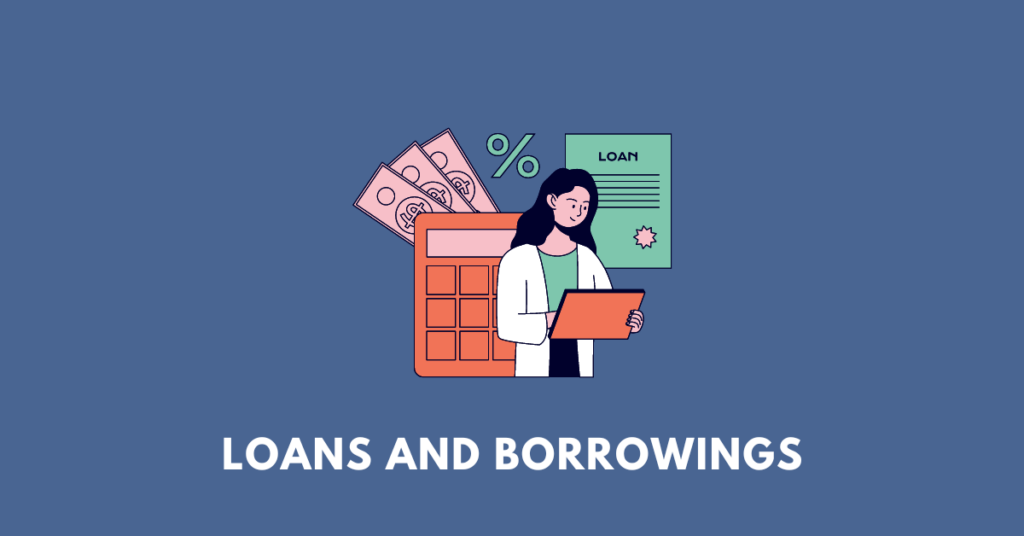
Here, you will find summaries, questions, answers, textbook solutions, pdf, extras, MCQs etc. of (Nagaland Board) NBSE Class 10 Financial Literacy Chapter 3: Loans and Borrowings. These solutions, however, should be only treated as references and can be modified/changed.
Summary
This chapter introduces the concept of loans, the different types of loans, and their specific features. A loan is an amount of money borrowed from someone with the promise to repay it at a future date. In a loan, there are two parties involved: the borrower, who takes the loan, and the lender, who provides the loan. The borrower is required to pay interest to the lender as the cost of borrowing.
Interest can be calculated using the simple interest formula: Simple Interest = (Principal × Rate × Time) / 100. Loans can be categorized as secured and unsecured loans. Secured loans require collateral or security, while unsecured loans do not require any collateral. Various types of loans include personal loans, home loans, education loans, vehicle loans, and agricultural loans.
Education loans are essential for students who want to pursue higher studies. These loans are provided by banks and financial institutions with relatively low-interest rates. The loan amount, security requirements, and repayment terms may vary from bank to bank. Education loans can be used for studying in India or abroad and cover expenses like tuition fees, hostel fees, examination fees, library fees, and laboratory fees. The repayment of education loans usually begins one year after the completion of the course, and the loan has to be repaid within 15 years.
Textual questions and answers
MCQs
1. The person who gets a loan from a bank can be termed as ______
Answer: (b) Borrower
2. Bank does not give loan against ______
Answer: (c) Lottery ticket
3. The basic difference between a secured & unsecured loan is the requirement of ______
Answer: (b) Collateral
4. Education Loans ______
Answer: (c) Both
5. Bank charges interest on ______
Answer: (b) Loans
Fill in the blanks (Though fill in the blanks don’t come in exams, they can be included as MCQs)
1. ______ is the amount paid by the borrower to the bank for availing the loan.
Answer: Interest
2. Loan for which someone has to pay security or collateral to the lender is called ______.
Answer: Secured Loan
3. Education Loan is to be repaid in ______ years after the commencement of repayment.
Answer: 15
4. EMI consists of a part of the ______ amount as well as ______ amount.
Answer: Principal, Interest
5. The property purchased with the home loan is usually required to be ______ with the bank.
Answer: Hypothecated
Extra/additional MCQs
Q. A loan is a certain amount of money which is ________ from someone with a promise to repay it at a future date.
A. Invested B. Lent C. Borrowed D. Donated
Answer: C. Borrowed
Q. The basic difference between a secured & unsecured loan is the requirement of ________.
A. Interest B. Collateral C. Repayment period D. Credit score
Answer: B. Collateral
Q. In case of a secured loan, if you are unable to repay the loan, the bank may initiate action against the ________.
A. Borrower B. Lender C. Asset D. Interest
Answer: C. Asset
Q. Education loan applicants usually need to submit their student/co-borrower/guarantor’s bank account statement for the last ________ months.
A. 3 B. 6 C. 9 D. 12
Answer: B. 6
Get notes of other classes and subjects


